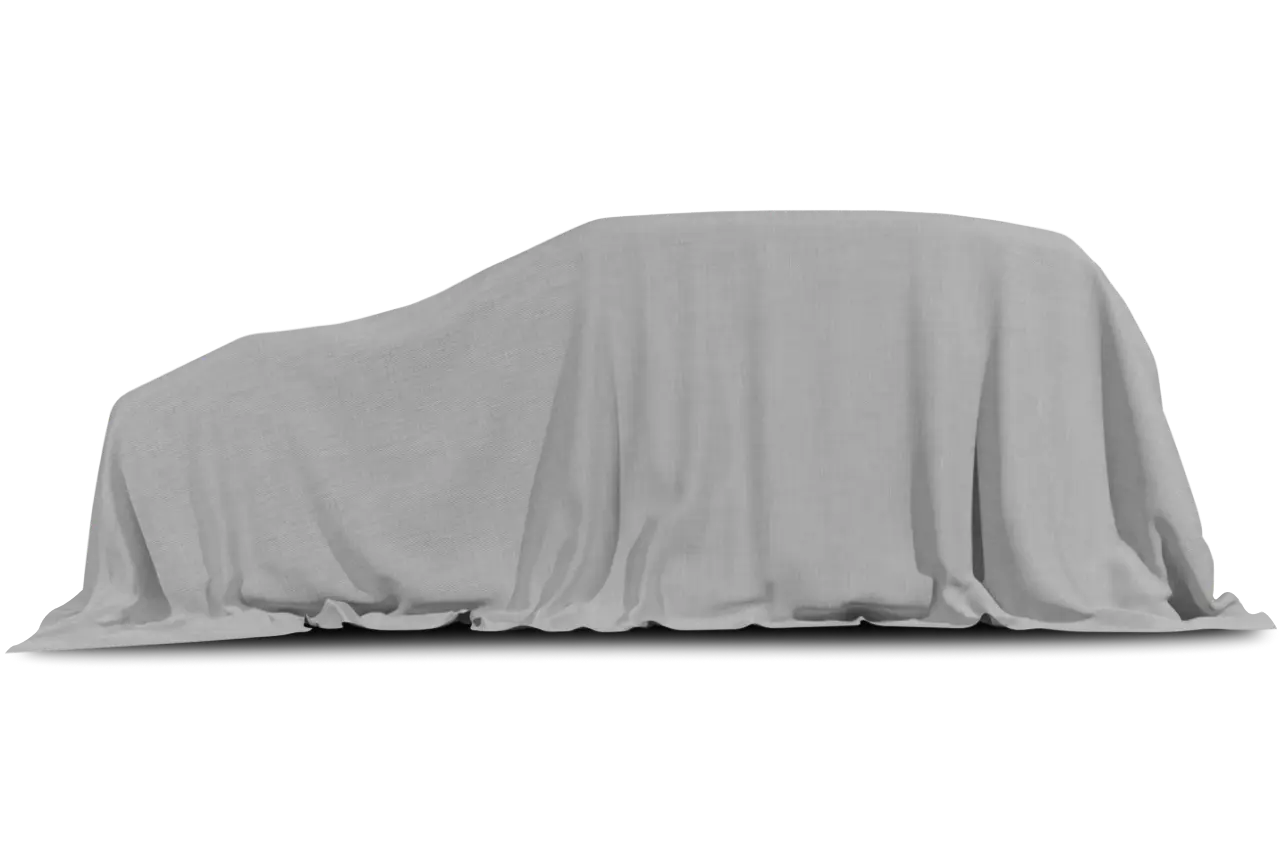
Land Rover has done quite well for itself since its separation from Ford more than a decade ago. Under the watchful eye (and deep development pockets) of India’s Tata Group, the UK’s luxury SUV brand has thrived with new models, updated interiors and no loss of cachet along the way. The Range Rover model is still a desirable vehicle and status symbol for many thanks to its iconic styling and real go-anywhere capability. We just had a week with one of the more interesting variants of the luxury SUV: the 2018 Land Rover Range Rover HSE Td6.
What’s all that word soup mean? Well, the overall brand is Land Rover, but under that there’s a model line range called Range Rover. Within that, you have the Range Rover Evoque (the little one), the Range Rover Velar (the slightly larger, more stylish one), the Range Rover Sport (the fastest one) and the plain old Range Rover, the biggest, most luxurious and most expensive one. That’s the one we tested here, but in an unusual twist, we tested what amounts to a mid-level trim, slotted above the base Range Rover and below the nicer (and more expensive) Supercharged, Autobiography and SV Autobiography Dynamic trim levels. This means that our test vehicle was nice, but not super nice like other examples I’ve tested in the past. The Range Rover is also available in two wheelbase lengths, in case you’re looking for an off-road limo; mine was the short-wheelbase variant.
It didn’t have a fancy, ultra-powerful engine, nor did it have much in the way of bells and whistles other than what you’d normally expect to find in a well-equipped luxury vehicle. But what it did have was all the elements necessary to create a driving experience that still makes you feel spoiled and coddled. And for the money, it had better at least do that.
Diesel Is Not Dead
The standard engine in the Range Rover model is a supercharged 3.0-liter V-6 making 340 horsepower, but my model came with the optional turbo-diesel 3.0-liter V-6 engine. In true diesel engine fashion, it pumps out only 254 hp but makes a mountainous 443 pounds-feet of torque. It should be noted that this engine also forms the basis for the new Ford Power Stroke diesel V-6 that can be found under the hood of the latest F-150 pickup truck, albeit with some serious modifications. The motor fires right up, but little effort seems to have been made to disguise the fact that there’s an oil-burner under the hood — it sounds for all the world like a Ford Super Duty pickup.
Twist the rotary gear selector (which I honestly have no issues with) into Drive, and off you go, sounding like your $100,000 luxury SUV is a lightly disguised delivery van. But the noise is the only downside to this powertrain — combined with the super-smooth eight-speed automatic transmission and standard all-wheel drive, its power delivery and acceleration are creamy smooth, with seemingly endless torque to drive the big SUV onward when you stab the accelerator. Around town, it’s calm and efficient; you’ll never find yourself wishing for more power as it’s always just a quick jab of the go-pedal away. Out on the highway, it settles down and allows for quick passing when needed or sedate cruising at rapid speeds. Having driven other Range Rovers with more frenetic powertrains like the SVR, the HSE’s turbo-diesel is more workhorse than racehorse but is perfectly adequate to move you over the planet in all-terrain style.
The benefit of the diesel engine is twofold: towing and fuel economy. Should you decide you need to tow a boat or perhaps a horse trailer, you’ll find the Range Rover diesel’s tow rating up to the task with a 7,716-pound maximum trailer rating. That’s no different than the max tow rating for a Range Rover with a gas engine, but the nature of a diesel motor is that the torque is made way down low in the rev range, making for easier, more responsive towing. It bests the standard ratings for the Lincoln Navigator and Mercedes-Benz GLS450, and falls short only of the Cadillac Escalade. Unhook the trailer, and your fuel economy is EPA-rated at 22/28/24 mpg city/highway/combined, easily topping any of the Range Rover’s competitors by a significant amount (now that Mercedes-Benz has killed all its diesel offerings in the U.S.). My testing saw highway fuel economy climb to nearly 30 mpg, with an overall rating of 26 mpg, both impressive figures for a vehicle this big and heavy.
One aspect of the Range Rover that can’t be hidden is its tall, narrow nature. Unlike competitors such as the Navigator or Escalade, which are wider and based on pickup underpinnings, the Range Rover is a dedicated SUV unibody. The tall seating position means that handling is a bit numb and body motions feel tippy around corners, but you’re not likely to drive this thing like a sports car anyway. It has plenty of confidence and stability as long as you don’t ask more of it than calm SUV duties demand.
While the Range Rover has one of the most advanced electronic off-road systems in the world, like most owners of these super-expensive all-terrain SUVs, I never did take it on anything more challenging than a gravel driveway. But you easily can — a rotary knob on the center console allows you to adjust the four-wheel-drive system according to the terrain you’re traveling over. While that’s more likely than not to be pavement, you have options for sand, snow, ruts, rocks and just about anything you might encounter. I’ve previously driven Land Rovers of all sorts over terrain you would have trouble traversing on foot, and I can attest to the efficacy of their electronic systems in allowing expensive, heavy trucks to make quick work of challenging environments.
The Buttons Are Gone
Where I start to struggle with the Range Rover is inside. Land Rover has seen fit to do away with almost all of the vehicle’s buttons and knobs in favor of two large touch-sensitive screens on the center console and dashboard working in combination with touch-sensitive panel switches on the steering wheel and doors. In short, they’re terrible to use. While large, bright and easy to read, the screens themselves offer no feedback to the touch to let you know you’ve selected something successfully. I couldn’t even find a way to make the selection beep when I touched it. And just about everything is now selected through these screens, from multimedia and navigation to climate control. The seat heating and cooling functions, for instance, are hidden in their operation by pushing the same ring that controls climate control temperature, something I discovered by accident. Adjusting anything on these screens is a significant driver distraction, requiring you to take your eyes off the road and hunt for the selection you want. Furthermore, the sensitivity of the screen is poor, often requiring multiple touches.
The same issue happens with the steering wheel controls, which are now touch-sensitive organic light-emitting diodes that change icons depending on what you’re asking them to do. The issue here is that they also don’t work well, requiring multiple presses in order to activate functions in the gauge display. The side mirror adjustment control on the top of the driver’s door is especially awful, with disappearing OLED icons on a completely horizontal panel that are impossible to read in the daytime.
Such flat-panel control-display combinations may look flashy and do provide a high degree of customization and reconfiguration, but they do nothing to convey luxuriousness. Without feedback or an actuation of a physical button, the “quality feel” of the switches is absent. Cadillac and Lincoln have both learned from their mistaken foray into buttonless panels and have recently retreated from such panel-intensive interiors, but apparently this lesson needs to be learned by the next bunch of automakers like Land Rover and Volkswagen.
Luxurious Trimmings but Compromised Cargo
The controls largely ruin what is otherwise a lovely interior that uses premium materials throughout, with high-grade leather, real wood and metal trim, and highly adjustable seats that provide excellent comfort. The Mercedes-Benz GLS450 isn’t quite as nice, and the Cadillac Escalade doesn’t come close to being as opulent as the Range Rover’s cabin even in its top trim levels. Only the Lincoln Navigator Black Label rivals the Range Rover in terms of interior material quality and finish. There’s tons of headroom for all passengers thanks to the tall roof, and both front and backseat passengers have space to stretch their legs. This is just a five-seat SUV, however, while Cadillac, Lincoln and Mercedes-Benz all feature standard three-row accommodations.
Cargo room is decent in the Range Rover, but the arrangement of the folding second-row seats is awkward. There’s 31.8 cubic feet of cargo room behind the second row, which is on the small side given that the Escalade, Navigator and GLS all have roughly 50 cubic feet or more. The Range Rover’s rear seats fold with power actuation, but the enormous head restraints don’t fold well, which forces the front seats to slide forward to fold the second row flat. This takes away legroom from the front occupants when the second row is stowed. Total cargo volume is 68.6 cubic feet, which is also well short of the larger, less expensive domestic brand competitors or the comparably priced but aging Mercedes-Benz GLS.
Fully Modern Safety
One area the Range Rover excels in is safety equipment. Forward emergency brake assist and autonomous braking is standard, as is cornering brake control and roll stability control. A 360-degree camera system is optional and was present on my test vehicle as part of a $2,400 Vision Assist Package that included automatic high-beam assist and a head-up display. The Range Rover has not been crash-tested by either the Insurance Institute for Highway Safety or the National Highway Traffic Safety Administration.
Priced to Sell (in Limited Quantity)
There are several grades of Range Rover to choose from, with an astonishingly wide price span: The 2018 starts at $88,345 including destination for the base Supercharged V-6 4×4 trim level, and it ranges up to well more than $200,000 for the loaded SV Supercharged V-8 Autobiography long-wheelbase trim. My mid-range HSE Td6 started at $97,045 including destination, but then added about $10,000 worth of options including the Vision Assist Package (auto high beams, customizable interior lighting, head-up display, surround-view cameras), the Drive Pro Pack (adaptive cruise control, lane keep assist, blind spot assist), a towing package, walnut veneer trim, 20-way heated and cooled front seats with power reclining rear seats, ebony headliner, four-zone climate control, 110-volt power outlets and cabin filtration. The grand total for my test vehicle was $108,040.
For this kind of money, you can find yourself in either a Lincoln Navigator L Black Label or a Cadillac Escalade ESV Platinum model, completely loaded to the gills with technology and luxurious appointments. In the case of the Lincoln, a competitive case can be made — it’s blessed with interior appointments that now rival some of the best luxury brands in the business. When considering the Escalade, however, the interior appointments do not match the exorbitant price, and the Range Rover does come out on top. Compare the Range Rover to its competitors here. The Range Rover also bests either of the two larger SUVs in the rare instance that you do need to head off-road, with its more sophisticated all-wheel-drive system, adjustable height suspension and better approach and departure angles. Add the Range Rover’s longtime luxury cachet, which counts for a lot in luxury buyers’ minds, and this latest model looks set to continue the brand’s popularity.
Cars.com’s Editorial department is your source for automotive news and reviews. In line with Cars.com’s long-standing ethics policy, editors and reviewers don’t accept gifts or free trips from automakers. The Editorial department is independent of Cars.com’s advertising, sales and sponsored content departments.












































.jpg)